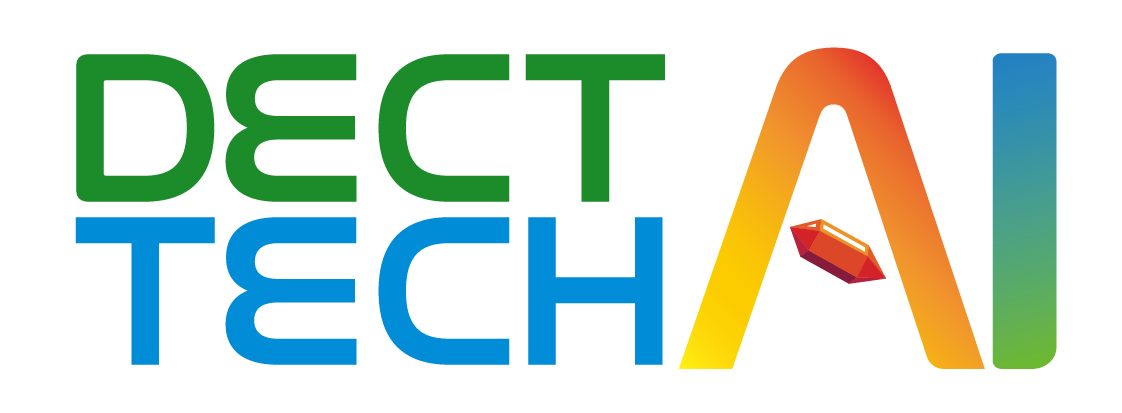Flagship Course #1

Course Objectives
• Understand and efficiently navigate the updated Blender interface.
• Apply AI tools to streamline modeling and animation processes.
• Utilize advanced rendering techniques to enhance the visual quality of their projects.
Course Design Rationale
• Industry Demand for Advanced 3D Skills
The 3D modeling and animation industry is rapidly evolving, driven by technological advancements and increasing demands for high-quality visual content in movies, video games, virtual reality, and other digital media. As technology progresses, the complexity of projects also increases, necessitating a workforce that is not only proficient in traditional 3D modeling techniques but also skilled in leveraging the latest technologies.
• Leverage Cutting-Edge Technology
Blender 4.2 introduces significant enhancements in AI and rendering capabilities. These tools are designed to automate complex processes, improve the precision of modeling tasks, and render more realistic environments and characters. Integrating AI helps in automating repetitive tasks, refining models with greater accuracy, and enhancing creativity through more dynamic and flexible production workflows. Advanced rendering techniques like Gaussian Splatter contribute to creating more lifelike and detailed textures that meet the high standards of current industry expectations.
• Need for Skilled Professionals
There is a growing demand in the industry for professionals who are not only familiar with basic 3D modeling concepts but who can also harness advanced tools to create detailed, high-quality 3D art efficiently. This course aims to fill that gap by equipping learners with the skills to use these advanced tools effectively, thus making them more competitive in the job market.
Learning Outcomes
1. Gain Proficiency in Blender 4.2: This course objective is crucial as it lays the foundation for all further learning and application within the software. Blender 4.2, like its predecessors, is a complex tool with a multitude of functionalities that cater to various aspects of 3D creation, including modeling, animation, simulation, rendering, and compositing.
-
1.1. Navigation: They will be able to move around the software interface with ease, accessing different panels, menus, and tools efficiently.
-
1.2. Tool Utilization: Participants will understand how to use various modeling, sculpting, texturing, and rendering tools available in Blender 4.2 to accomplish their creative goals.
-
1.3. Feature Integration: They will be capable of integrating and utilizing new features introduced in Blender 4.2, such as AI tools and rendering enhancements, to enhance their workflow and output quality.
2. AI Application Skills: Blender 4.2 has integrated AI tools that transform traditional workflows, allowing for more complex creations to be done with less manual input. These tools can automate repetitive tasks, predict user actions, and offer intelligent solutions that would be time-consuming to execute manually.
2.1. Integrate AI Tools: Participants will adeptly integrate AI-driven features such as automated object recognition, AI-powered sculpting, and animation refinements into their workflow.
2.2. Automate Processes: They will learn how to automate repetitive tasks using AI tools, saving time and effort while maintaining precision and accuracy in their models.
2.3. Enhance Creativity: Participants will harness the power of AI to explore new creative possibilities, pushing the boundaries of what can be achieved with manual modeling techniques alone.
3. Advanced Rendering Techniques: Gaussian Splatter is a technique used in texturing and rendering that allows for the creation of highly detailed, photorealistic textures by simulating the irregular scattering of surface details. This method is beneficial for creating complex materials like skin, cloth, and environmental textures.
3.1. Understand Gaussian Splatter: Participants will gain a comprehensive understanding of Gaussian Splatter techniques, including its mathematical principles and practical applications within Blender 4.2.
3.2. Apply Texturing Effects: They will be capable of applying Gaussian Splatter techniques to create intricate and realistic textures for their 3D models, enhancing the visual quality and realism of their renders.
3.3. Enhance Realism: Participants will leverage Gaussian Splatter to achieve advanced texturing effects that enhance the realism of their renders, making their 3D models appear more lifelike and immersive.
Course Duration: 180 minutes
Course Structure
| Time (Minutes) | Activity | Description |
|---|---|---|
| 0:00 - 0:10 | Course Introduction | Overview of Blender 4.2 and introduction to the course objectives and structure. |
| 0:10 - 0:20 | Exploring Blender 4.2 Interface | Hands-on navigation of Blender 4.2's updated interface to familiarize with key tools and settings. |
| 0:20 - 0:30 | Introduction to AI in Blender 4.2 | Brief overview of new AI tools and their potential applications in Blender 4.2. |
| 0:30 - 0:40 | Configuring AI Tools in Blender 4.2 | Installing and setting up AI plugins; preparing for their use in projects with the new version. |
| 0:40 - 0:50 | Applying AI for 3D Modeling in Blender 4.2 | Practical session on employing AI to generate and refine 3D models using the latest Blender tools. |
| 0:50 - 1:00 | Advanced AI Modeling Techniques | More advanced modeling techniques using AI, focusing on automation and refinement provided in Blender 4.2. |
| 1:00 - 1:10 | Break | Short break and informal Q&A session. |
| 1:10 - 1:20 | Introduction to Gaussian Splatter | Explaining Gaussian Splatter techniques and updates in Blender 4.2 for more realistic texturing and rendering. |
| 1:20 - 1:30 | Practical Application of Gaussian Splatter | Hands-on session on how to apply Gaussian Splatter techniques within a project in Blender 4.2. |
| 1:30 - 1:40 | Advanced Texturing with Gaussian Splatter | Using Gaussian Splatter for complex texturing and visual effects in Blender 4.2. |
| 1:40 - 1:50 | Integrating AI and Gaussian Splatter in Blender 4.2 | Combining new AI enhancements with Gaussian Splatter to produce high-quality visual outputs in Blender 4.2. |
| 1:50 - 2:00 | Workflow Optimization in Blender 4.2 | Tips and tricks to streamline workflows using AI and Gaussian Splatter in the latest Blender version. |
| 2:00 - 2:10 | Break | Second break, prepare for independent practice. |
| 2:10 - 2:20 | Independent Practice: AI Techniques in Blender 4.2 | Students independently apply AI techniques to their own projects, with instructor oversight. |
| 2:20 - 2:30 | Independent Practice: Gaussian Splatter Techniques | Students apply Gaussian Splatter to their projects, integrating texturing techniques learned earlier in Blender 4.2. |
| 2:30 - 2:40 | Combining Techniques in Blender 4.2 | Students combine AI and Gaussian Splatter techniques in their project to achieve a refined output using Blender 4.2. |
Changes to speakers or content of conferences or courses will not be notified separately.
Tools and Resources Required
• Blender 4.2 Software
• AI and Gaussian Splatter Plugins: Detailed list provided at the start of the course.
• Workstation: Computers equipped with graphics capabilities sufficient to smoothly run Blender 4.2 and handle rendering tasks.
This course aims to provide hands-on experience with the latest tools in Blender, enabling participants to effectively incorporate new technologies into their professional 3D modeling and rendering workflows.





